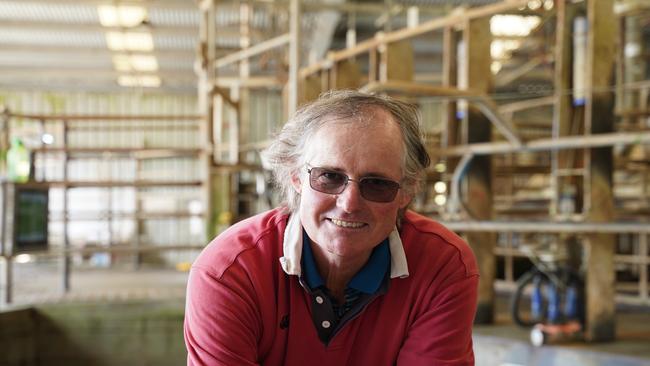Farmers urged to secure fodder supplies
Despite a lucrative growing season, heatwave conditions and a lack of rain have put pressure on Australia’s fodder stocks. See how prices are tracking.
Heatwave conditions and a lack of rain have put pressure on Australia’s fodder stocks despite what was considered a lucrative growing season.
Ballarat had a top temperature of 34C on Monday with Mildura hitting 38C, Hamilton 37C and Tatura 35C.
Prices are holding firm for hay and fodder, and farmers say demand is strong as dry conditions take hold.
However, there are warnings that supplies could start to tighten up if the hot and dry weather continues.
Winslow farmer and United Dairyfarmers of Victoria vice president Bernie Free said things were green until late January.
“It is certainly not green anymore,” he said.
“If we get an autumn break, that will be good, but at the moment, it is dry.”
Mr Free said there was currently enough fodder around, but dairy farmers in Victoria were monitoring the situation in northern NSW.
He said dry conditions for livestock producers could ultimately put pressure on fodder stocks.
“We are still hearing of a large amount of hay being sent to the NSW and Queensland border,” he said.

According to the Australian Fodder Industry Association’s latest Hay Report, prices for fodder have remained steady in the Bega Valley, with cereal hay tracking at $240 to $320 a tonne. Lucerne hay is making $360 to $390 a tonne, and pasture hay $260 to $300 a tonne.
Similar values are reported in Gippsland with cereal hay, the same values at $240 to $320 a tonne, and pasture hay is slightly cheaper at $240 to $280 a tonne.
AFIA states that dry conditions continue in the south west of Victoria and west into South Australia.
Late summer and warm conditions have impacted pastures.
Dairy and livestock producers have been busy ensuring they have good-quality feed supplies before heading into the autumn and winter period.
The Bureau of Meteorology has forecast a return to neutral El Nino-Southern Oscillation levels in the southern hemisphere during autumn this year.
In southern NSW, at Finley dairy, farmer Malcolm Holm said some maize crops were being cut for silage.
He said farmers were certainly cautious about the run of hot and dry weather.
Mr Holm said the availability of fodder in his area was “good at this stage” and farmers were preparing for autumn calving.




